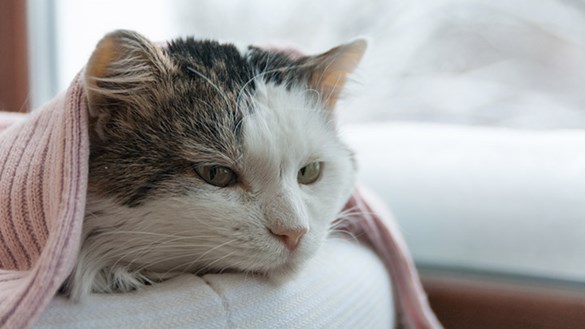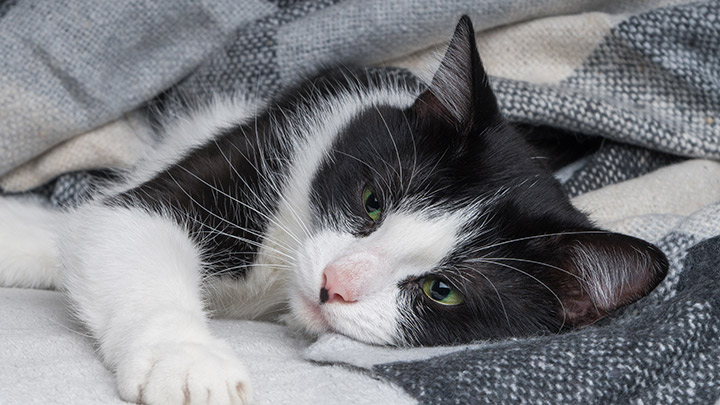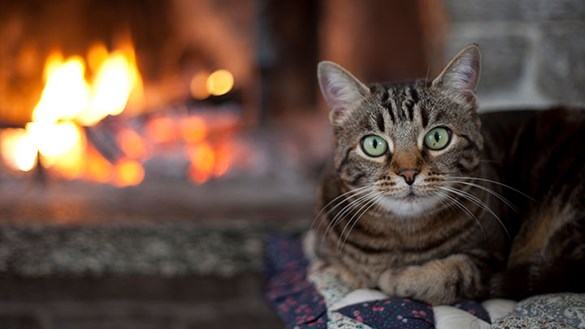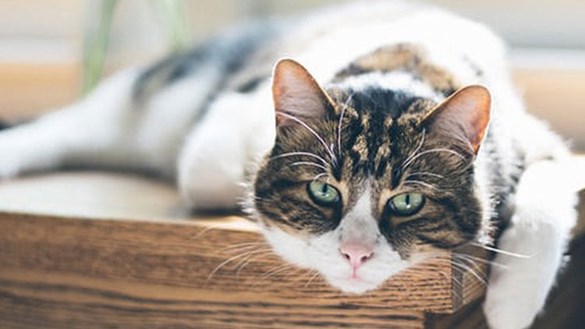Signs, Symptoms And Treatment Of Cat Flu
Cat flu is very common and can vary from mild to severe. Keep your cat healthy and protected with our advice on the causes, symptoms, and treatment of cat flu.

What is cat flu?
Cat flu (or feline viral infectious respiratory disease) is very common in cats and causes symptoms that are similar to that of the human cold. While some cases can be mild, others can be life-threatening, particularly in kittens, so it’s important for all owners to be aware of the condition.
Kittens and cats with underlying health issues are most at risk of developing severe complications, including lasting eye damage and even total sight loss. In some rare cases, it can be fatal.
The causes of cat flu
Most cat flu cases are caused by feline herpesvirus or feline calicivirus. These viruses are highly contagious and usually spread between cats through direct contact, sneeze droplets, and shared food bowls. Virus particles can survive for up to a week in the environment, so your cat may not need to encounter an infected cat to catch the disease.
What are the symptoms of cat flu?
Symptoms of cat flu tend to appear after two to 10 days, and can include:
- Sneezing
- Discharge from nose and eyes
- Tiredness
- Lack of appetite
- Fever
Symptoms vary considerably, from very mild to increasingly severe. If you spot any of the above, speak to your vet straight away.
Treating cat flu
Just like human colds, there isn’t a cure for cat flu. Antibiotics can’t treat the viruses that cause it, but they can help if there’s a secondary bacterial infection caused by damage to the lining of the nose and airways; if left untreated this can cause complications, such as pneumonia.

Your cat will need extra special care at home to help them get better. A blocked nose and mouth ulcers can make it difficult to eat and drink which can lead to dangerous levels of dehydration. Wet, strong-smelling foods will be more appetising for cats with a blocked nose and sore throat and will also help boost their water intake.
Encourage your cat to drink as much as possible, as fluids can help loosen thick mucus; intravenous fluids may be required if they’re still reluctant to drink. Regularly wipe away any discharge from the eyes or nose with damp cotton wool and keep them warm and comfortable throughout their illness.
Preventing cat flu
Vaccinations protect against some of the viruses that can cause cat flu. However, vaccines don’t cover every single cause of cat flu, so regularly disinfecting their bedding, litter tray and toys, particularly if you have more than one cat, is still recommended.
Disinfecting your cat's litter tray
- Carefully, and while wearing a mask, take out and dispose of all the soiled litter.
- Empty out the remaining litter into a separate bag from the rest of your rubbish, ensuring it is tied tightly
- Rinse the tray with very warm water, and afterwards use a pet-safe disinfectant spray on the edges and bottom
- Using a cloth that you use for this specific purpose (not one that you’d use on the worktops!), wipe around the sides, ensuring good coverage of the spray
- Rinse again with warm water, thoroughly
- Once dry, refill the litter tray
Find out more about protecting against cat flu at your nearest Medivet practice.

Medivet Healthcare Plan
On average our clients save an average of £225 with the Medivet Healthcare Plan.
Learn more

Our Pet Care Advice
At Medivet, we’re committed to providing trustworthy, expert advice that helps you care for your pet. Don't miss our latest advice for keeping your pets happy and healthy.
Search advice





